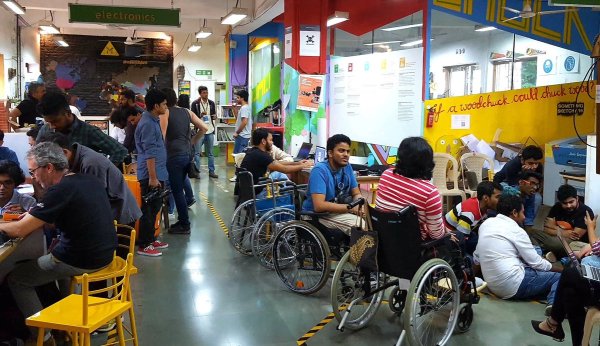Begun, the Spectrum Wars have. First, it was AM radio getting the shaft (last item) and being yanked out of cars for the supposed impossibility of peaceful coexistence with rolling broadband EMI generators EVs. That battle has gone back and forth for the last year or two here in the US, with lawmakers even getting involved at one point (first item) by threatening legislation to make terrestrial AM radio available in every car sold. We’re honestly not sure where it stands now in the US, but now the Swiss seem to be entering the fray a little up the dial by turning off all their analog FM broadcasts at the end of the year. This doesn’t seem to be related to interference — after all, no static at all — but more from the standpoint of reclaiming spectrum that’s no longer turning a profit. There are apparently very few analog FM receivers in use in Switzerland anymore, with everyone having switched to DAB+ or streaming to get their music fix, and keeping FM transmitters on the air isn’t cheap, so the numbers are just stacked against the analog stations. It’s hard to say if this is a portent of things to come in other parts of the world, but it certainly doesn’t bode well for the overall health of terrestrial broadcasting. “First they came for AM radio, and I did nothing because I’m not old enough to listen to AM radio. But then they came for analog FM radio, and when I lost my album-oriented classic rock station, I realized that I’m actually old enough for AM.”
Mumbai3 Articles
Rapidly Prototyping Prosthetics, Braille, And Wheelchairs
We live in an amazing time where the availability of rapid prototyping tools and expertise to use them has expanded faster than at any other time in human history. We now have an amazing ability to quickly bring together creative solutions — perfect examples of this are the designs for specialized arm prosthetics, Braille printing, and custom wheelchair builds that came together last week.
Earlier this month we published details about the S.T.E.A.M. Fabrikarium program taking place at Maker’s Asylum in Mumbai. The five-day event was designed to match up groups of makers with mentors to build assistive devices which help improve the condition of differently-abled people.
The participants were split into eight teams and they came up with some amazing results at the end of the five-day program.
Hands-On: Prosthetic Designs That Go Beyond
Three teams worked on projects based on Bionico – a myoelectric prosthesis
DIY Prosthetic Socket – a Human Machine Interface : [Mahendra Pitav aka Mahen] lost his left arm during the series of train bomb blasts in Mumbai in 2006, which killed 200 and injured over 700 commuters. He uses a prosthetic arm which is essentially a three-pronged claw that is cable activated using his other good arm. While it is useful, the limited functionality restricted him from doing many simple things. The DIY Prosthetic socket team worked with [Mahen] and [Nico Huchet] from MyHumanKit (who lost his right arm in an accident 16 years back), and fabricated a prosthetic forearm for [Mahen] with a modular, 3D printed accessory socket. Embedded within the arm is a rechargeable power source that provides 5V USB output at the socket end to power the devices that are plugged in. It also provides a second port to help recharge mobile phones. Also embedded in the arm was an IR reflective sensor that can be used to sense muscle movements and help trigger specific functions of add-on circuits, for example servos.
Continue reading “Rapidly Prototyping Prosthetics, Braille, And Wheelchairs”
Hackaday Links: August 2, 2015
Over the last few years, Maker’s Asylum in Mumbai has grown from a garage to a very well stocked workspace with 140 members. They’re getting kicked out at the end of the month and they need some help. We just had a meetup at the Delhi branch of Maker’s Asylum, and these guys and gals are really cool.
Speaking of crowdfunding campaigns for hackerspaces, South Central Pennsylvania might be getting its own hackerspace. The 717 area code is a vast wasteland when it comes to anything anyone reading Hackaday would consider interesting, despite there being plenty of people who know their way around CNC machines, soldering irons, and welders. This needs to happen.
Need some help with Bluetooth standards? Tektronix has you covered with a gigantic poster of the physical layer. If only there were a repository of these handy, convenient reference posters.
Forgings and castings make for great YouTube videos, and this aluminum bell casting is no exception. There’s about 18 pounds of aluminum in there, which is pretty large as far as home casting goes.
Electronic Goldmine has an assortment of grab bags – spend a few dollars get a bag of chips, LEDs, diodes, or what have you. What’s in these grab bags? [alpha_ninja] found out. There’s some neat stuff in there, except for the ‘SMD Mixture’ bag.
Remember the found case molds for the Commodore 64C that became a Kickstarter? It’s happening again with the Amiga 1200. This is a new mold with a few interesting features that support the amazing amount of upgrades that have come out for this machine over the years. Being new molds, the price per piece is a little high, but that’s your lesson in manufacturing costs for the day.















